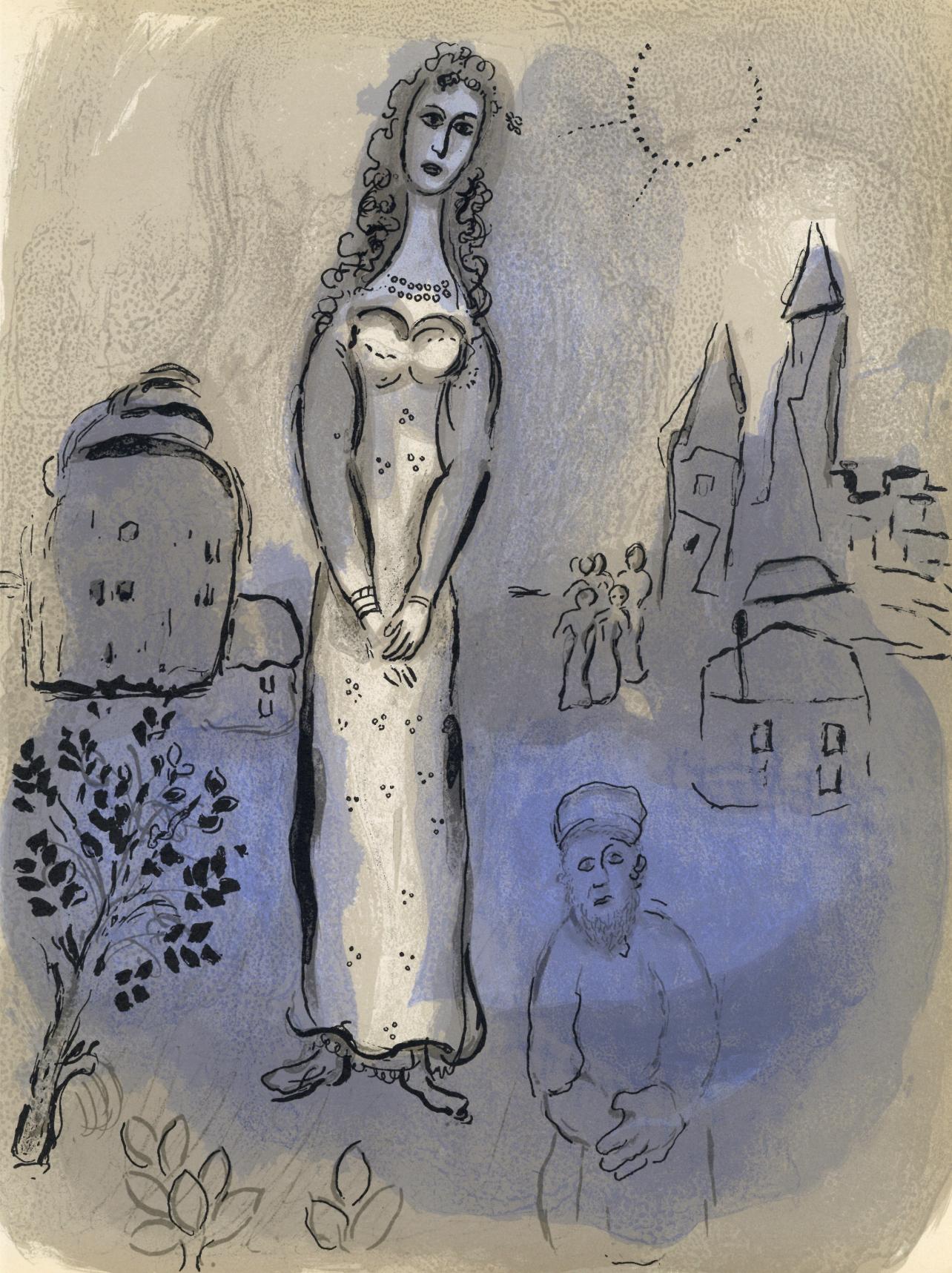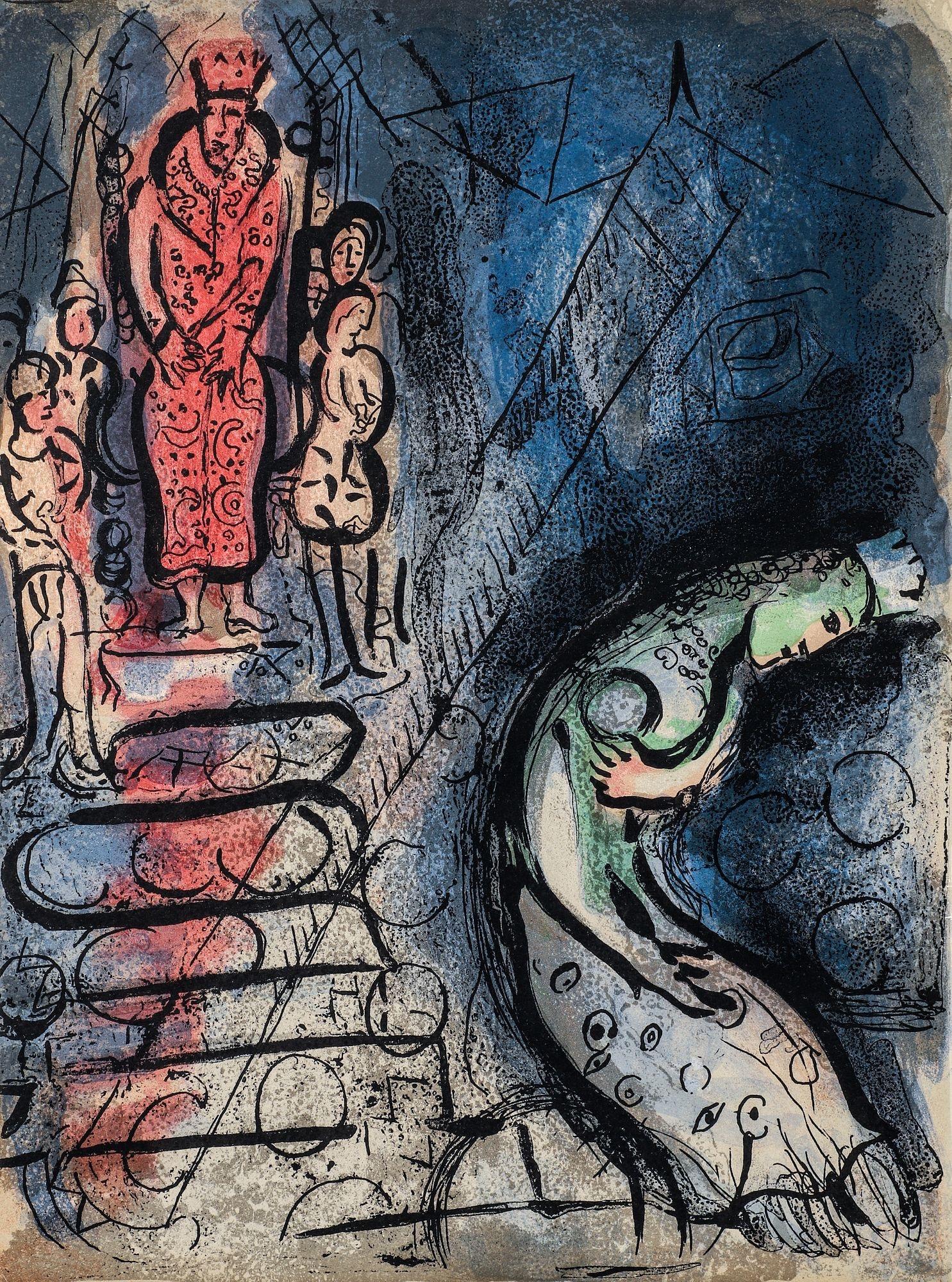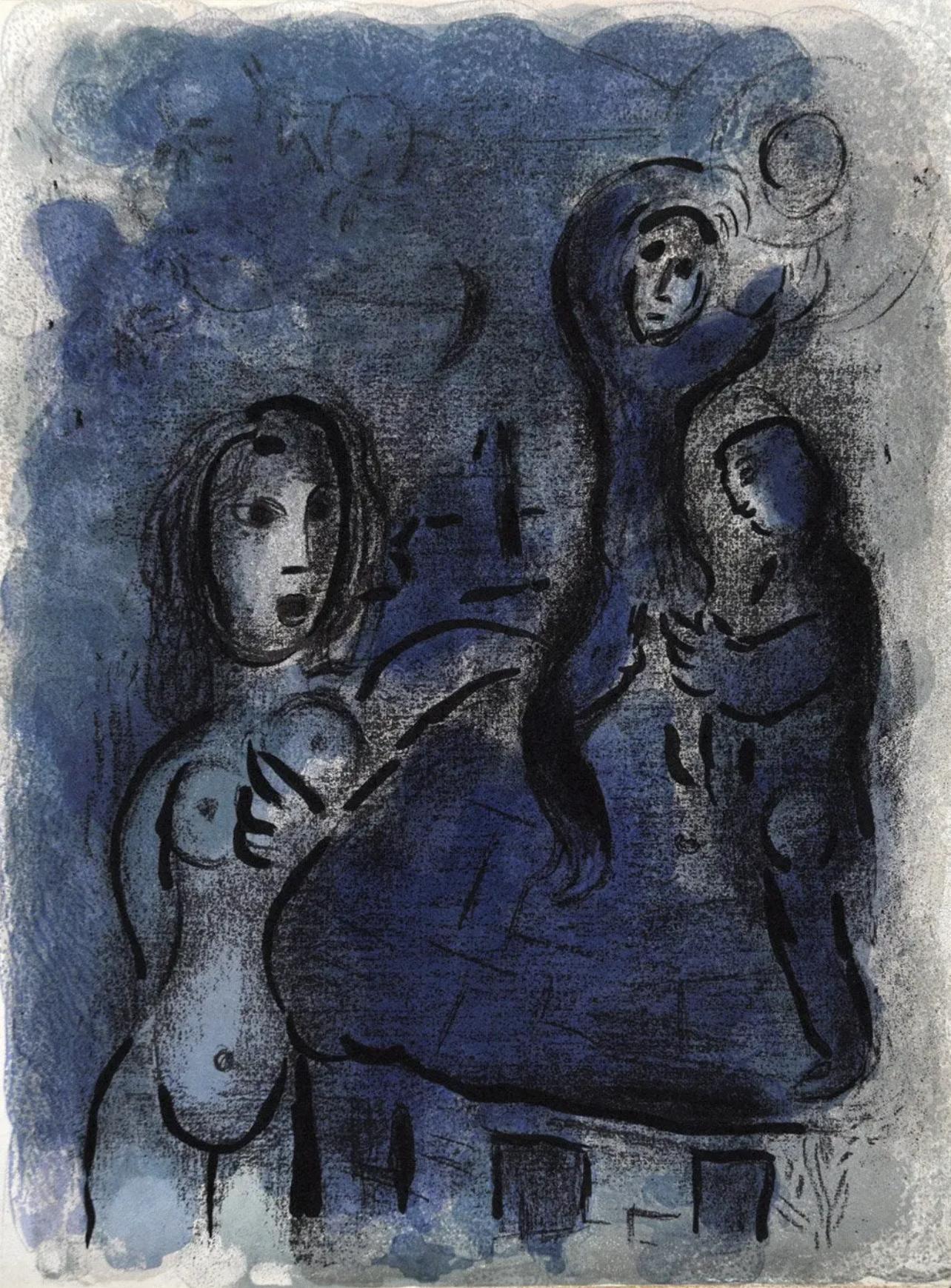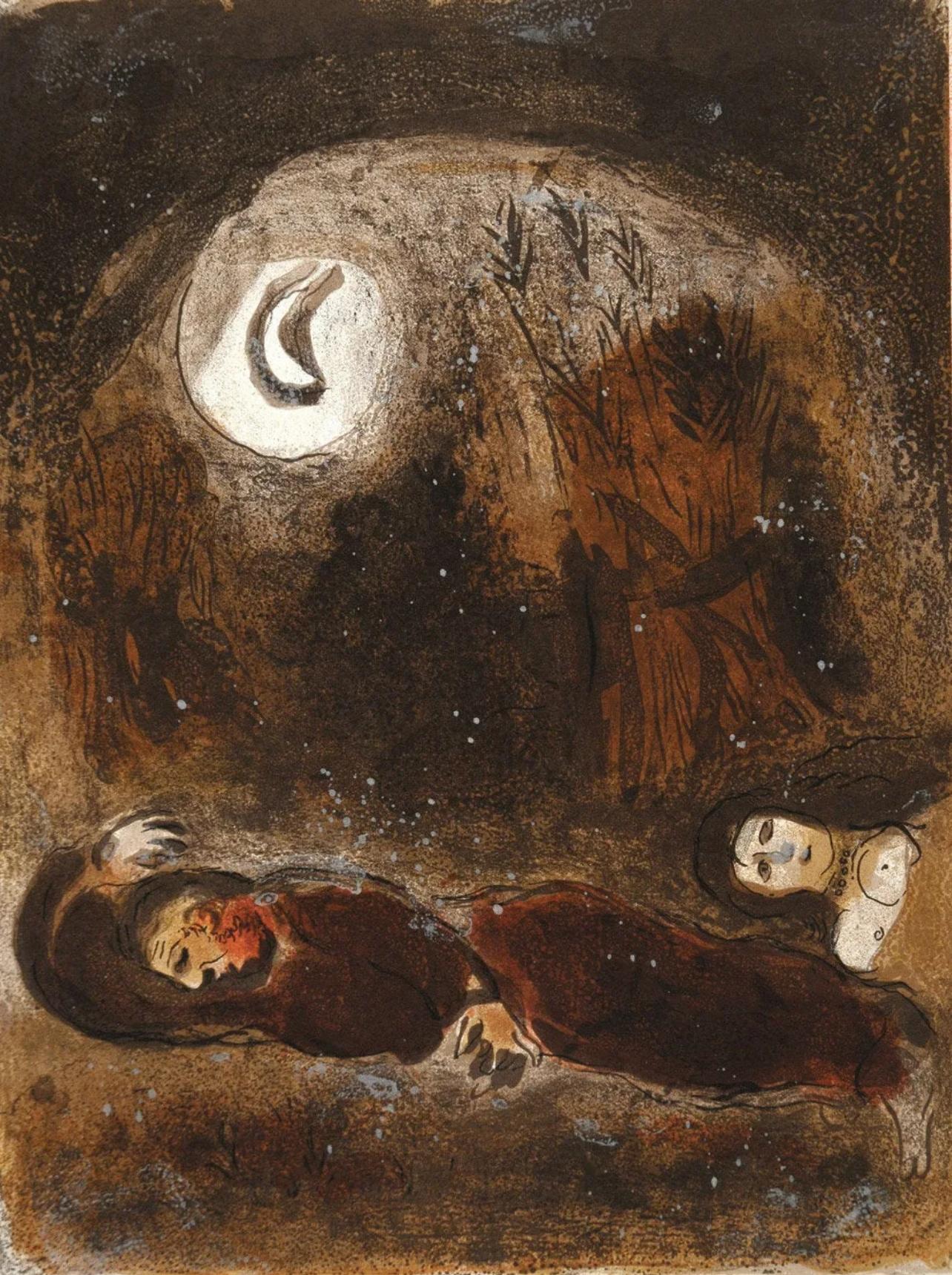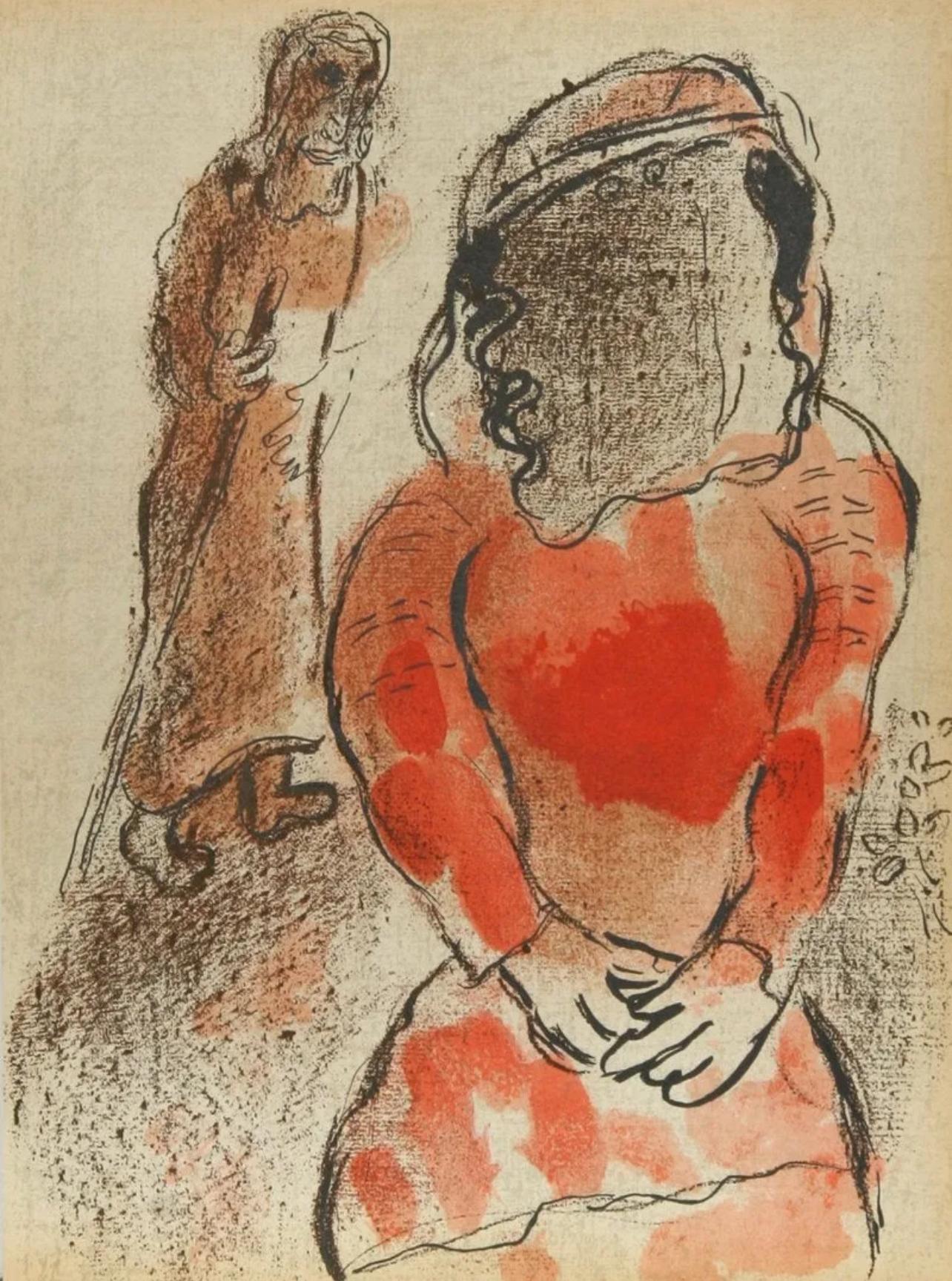Items Similar to Engagement - Original Lithograph by George Grosz - 1923
Want more images or videos?
Request additional images or videos from the seller
1 of 2
George GroszEngagement - Original Lithograph by George Grosz - 19231923
1923
About the Item
Engagement is an original offset and lithograph realized by George Grosz.
The artwork is the platen. 17 from the portfolio Ecce Homo published between 1922/1923, edition of Der Malik-Verlag Berlin.
Original title: Verlobung
Good conditions except for yellowing of paper due to the time and some minor defects along the margin.
Ecce homo is a selected compendium of 100 artworks (16 watercolors and 84 drawings) that Grosz realized from 1915 to 1922. The book is a real satire of post-war German life, with prostitutes, politicians, mutilated veterans,capitalists, and drunks in different states of despair, lust, and rage. The German government banned his artworks and Grosz was put on trial for public offense.
George Grosz (1893 -1959) was a German artist known especially for his caricatural drawings and paintings of Berlin life in the 1920s. He was a prominent member of the Berlin Dada and New Objectivity group during the Weimar Republic.
He studied drawing at the Dresden Academy 1909-11 and at the School of Arts and Crafts in Berlin 1912-14, He was in the army 1914-15 and again for a short time in 1917, but spent the rest of the war in Berlin where he made violently anti-war drawings, in which his main focus was attacking the social corruption of Germany (capitalists, prostitutes, the Prussian military caste, the middle class).
His artworks had great impact in the Berlin Dada movement 1917-20 and collaborated with John Heartfield and Raoul Hausmann in the invention of photomontage. Many of his drawings were published in albums (Gott mit uns, Ecce Homo, Der Spiesser-Spiegel etc.), and he was subject to prosecutions for insulting the army and blasphemy. Visited the USA in 1932 to teach at the Art Students League, New York, and settled there 1933. In the latter part of his career he tried to establish himself as a pure painter of landscapes and still life, but also painted many compositions of an apocalyptic and deeply pessimistic kind. His role in the Berlin Dada movement affected political outlooks and artistic developments not only in Germany, but also in Russia, the Balkan nations, and parts of France. Grosz's penetrating, darkly humorous style of drawing and his use of satire as a weapon left a deep impression on the work of his contemporaries and the artists of the next generation. Some of his works from the early 1940s, particularly during World War II, do present an allegorical and dramatic representation of Grosz's moral perspective regarding war. Additionally, some of his last pieces from 1958 were photomontages and hearken back to his earlier Dadaist aesthetic and message, passing judgment upon consumerism and suggesting that his absorption with American culture had ended in disappointment. In 1959, Grosz sold his house and moved back to Berlin. He died shortly after his return, after a fall down the stairs.
- Creator:George Grosz (1891-1969, German)
- Creation Year:1923
- Dimensions:Height: 13.98 in (35.5 cm)Width: 9.65 in (24.5 cm)Depth: 0.04 in (1 mm)
- Medium:
- Movement & Style:
- Period:
- Framing:Framing Options Available
- Condition:Insurance may be requested by customers as additional service, contact us for more information.
- Gallery Location:Roma, IT
- Reference Number:Seller: M-1194371stDibs: LU65038086562
About the Seller
4.9
Platinum Seller
These expertly vetted sellers are 1stDibs' most experienced sellers and are rated highest by our customers.
1stDibs seller since 2017
6,693 sales on 1stDibs
Typical response time: 2 hours
- ShippingRetrieving quote...Ships From: Grasse, France
- Return PolicyA return for this item may be initiated within 14 days of delivery.
Auctions on 1stDibs
Our timed auctions are an opportunity to bid on extraordinary design. We do not charge a Buyer's Premium and shipping is facilitated by 1stDibs and/or the seller. Plus, all auction purchases are covered by our comprehensive Buyer Protection. Learn More
More From This SellerView All
- Cover for Vorstadt-Brodel - Lithograph by Eugen Hamm - 1922Located in Roma, ITCover for Vorstadt-Brodel is an original lithograph, realized by Eugen Hamm, a german artist, in 1922. In good conditions. This artwork represents a woma...Category
1920s Expressionist Figurative Prints
MaterialsLithograph
- Rettung - Original Lithograph by Alfred Kubin - 1944By Alfred KubinLocated in Roma, ITThis artwork is shipped from Italy. Under existing legislation, any artwork in Italy created over 70 years ago by an artist who has died requires a licence for export regardless of t...Category
1940s Expressionist Figurative Prints
MaterialsLithograph
- Die Mörderin - Original Lithograph by Ernst Barlach - 1912By Ernst BarlachLocated in Roma, ITDie Mörderin is an original hand-signed lithograph realized by the Expressionist German artist Ernst Barlac in 1912. This is the edition 150 prints. In good conditions. This lith...Category
1910s Expressionist Figurative Prints
MaterialsLithograph
- Monster - Lithograph by Emil Nolde - 1926By Emil NoldeLocated in Roma, ITMonster is an original color lithograph realized by Emil Nolde in 1926, artist’s proof before the first edition, out of an edition of 520 copies, Image dimensions: 16.2x11.2 In v...Category
1920s Expressionist Figurative Prints
MaterialsLithograph
- Bordellszene - Original Lithograph by Otto Gleichmann - 1924By Otto GleichmannLocated in Roma, ITBordellszene is an original lithograph, realized by Otto Gleichmann in 1924, hand- signed and dated. In very good conditions. Here the artwork represents two men in Expressionistic...Category
1920s Expressionist Figurative Prints
MaterialsLithograph
- Homeland Figures - Original Offset and Lithograph by George Grosz - 1923By George GroszLocated in Roma, ITHomeland figures from Ecce Homo is an original offset and lithograph, realized by George Grosz in 1922. The artwork is the plate n. 47 from the portfolio Ecce Homo published betwee...Category
1920s Expressionist Figurative Prints
MaterialsOffset, Lithograph
You May Also Like
- Apeles Fenosa Spanish Sculptor Mourlot Lithograph Abstract Expressionist FiguresBy Apelles FenosaLocated in Surfside, FLThis is from a hand signed, limited edition (edition of 125) folio or full page lithographs some having a poem verso. The individual sheets are not signed or numbered. This listing is just for the one sheet, not for the cover sheet or the signed sheet. This was printed at Mourlot in Paris, France, on velin D'Arches paper. Apel les Fenosa i Florensa (1899 - 1989) lived in Spain. Apelles Fenosa is known for Expressionist Sculpture. Artist's alternative names: Apel·les Fenosa, Apelles Fenosa Spanish Sculptor Fenosa was born in Barcelona, Spain in 1899 and as a young man worked in the studio of sculptor Enrique Casanovas where he came into contact with the ideas and adherents of the Modernist Movement and its influence in Barcelona, Paris and other European cities. In 1917 he founded together with Joan Rebull, Josep Granyer and Josep Viladomat the group The Evolutionists. He arrived in Paris in 1921. There he quickly gravitated into the Parisian avant garde artist community and became friends with Pablo Picasso, who became an early patron of his work, buying a significant number of his sculptures, and with the sculptor Max Jacob. By 1924 Fenosa was exhibiting in Paris and in his native city of Barcelona. Max Jacob wrote the preface to the catalogs of Fenosa's first Paris exhibition, and his show at the Zborowski gallery in 1928. In 1931 Fenosa was in Catalonia when the Second Spanish Republic was declared. There he remained in order to work with the anarchist movement and participate in the Republican ranks during the Spanish Civil War. He participated in the Venice Biennale in 1936 and with the coming to power of the Franco Fascist regime left Spain once again to settle in Paris. In 1942, he met the painter and poet, Paul Eluard, who became a close friend. In 1944, the Comite de Liberation du Limousin (Organization for the Liberation of the Limousin) commissions a sculpture to commemorate the Nazi killings of Oradour-sur-Glane. He creates the "Monument aux Martyrs d'Oradour-sur-Glane" (Monument to the Martyrs of Oradour) presently in Limoges. From 1946 Fenosa exhibited individually or collectively in Paris, London, Barcelona, Madrid, Prague, New York, Tokyo, Rabat, Osaka, Casablanca, Carrara. His personal exhibition catalogs are prefaced by the most famous writers and poets of his time, including Paul Eluard, Jean Cocteau, Jules Supervielle, Josep Carner, Alexandre Cirici-Pellicer, Francis Ponge, Pablo Neruda, Michel Cournot, Roger Caillois, Salvador Espriu. He was part of a generation of Spanish and Catalan artists that included Jose Amat Pages, Ramon Pichot, Alfredo Opisso Cardona, Ramon Aguilar More, Juan Cardona Llados, Josep Miquel Serrano...Category
1970s Expressionist Figurative Prints
MaterialsLithograph
- Apeles Fenosa Spanish Sculptor Mourlot Lithograph Abstract Expressionist FiguresBy Apelles FenosaLocated in Surfside, FLThis is from a hand signed, limited edition (edition of 125) folio or full page lithographs some having a poem verso. The individual sheets are not signed or numbered. This listing is just for the one sheet. This was printed at Mourlot in Paris, France, on velin D'Arches paper. Apel les Fenosa i Florensa (1899 - 1989) lived in Spain. Apelles Fenosa is known for Expressionist Sculpture. Artist's alternative names: Apel·les Fenosa, Apelles Fenosa Spanish Sculptor Fenosa was born in Barcelona, Spain in 1899 and as a young man worked in the studio of sculptor Enrique Casanovas where he came into contact with the ideas and adherents of the Modernist Movement and its influence in Barcelona, Paris and other European cities. In 1917 he founded together with Joan Rebull, Josep Granyer and Josep Viladomat the group The Evolutionists. He arrived in Paris in 1921. There he quickly gravitated into the Parisian avant garde artist community and became friends with Pablo Picasso, who became an early patron of his work, buying a significant number of his sculptures, and with the sculptor Max Jacob. By 1924 Fenosa was exhibiting in Paris and in his native city of Barcelona. Max Jacob wrote the preface to the catalogs of Fenosa's first Paris exhibition, and his show at the Zborowski gallery in 1928. In 1931 Fenosa was in Catalonia when the Second Spanish Republic was declared. There he remained in order to work with the anarchist movement and participate in the Republican ranks during the Spanish Civil War. He participated in the Venice Biennale in 1936 and with the coming to power of the Franco Fascist regime left Spain once again to settle in Paris. In 1942, he met the painter and poet, Paul Eluard, who became a close friend. In 1944, the Comite de Liberation du Limousin (Organization for the Liberation of the Limousin) commissions a sculpture to commemorate the Nazi killings of Oradour-sur-Glane. He creates the "Monument aux Martyrs d'Oradour-sur-Glane" (Monument to the Martyrs of Oradour) presently in Limoges. From 1946 Fenosa exhibited individually or collectively in Paris, London, Barcelona, Madrid, Prague, New York, Tokyo, Rabat, Osaka, Casablanca, Carrara. His personal exhibition catalogs are prefaced by the most famous writers and poets of his time, including Paul Eluard, Jean Cocteau, Jules Supervielle, Josep Carner, Alexandre Cirici-Pellicer, Francis Ponge, Pablo Neruda, Michel Cournot, Roger Caillois, Salvador Espriu. He was part of a generation of Spanish and Catalan artists that included Jose Amat Pages, Ramon Pichot, Alfredo Opisso Cardona, Ramon Aguilar More, Juan Cardona Llados, Josep Miquel Serrano...Category
1970s Expressionist Figurative Prints
MaterialsLithograph
- Yucatecas en la Parque, Lithograph by Francisco ZunigaBy Francisco ZúñigaLocated in Long Island City, NYArtist: Francisco Zuniga, Mexican (1912 - 1998) Title: Yucatecas en la Parque Year: 1986 Medium: Lithograph, signed and numbered in pencil Edition: 150 Size: 21 in. x 30 in. (5...Category
1980s Expressionist Figurative Prints
MaterialsLithograph
- Marat, Large Surrealist Lithograph by Paul WunderlichBy Paul WunderlichLocated in Long Island City, NYArtist: Paul Wunderlich, German (1927 - 2010) Title: Marat Year: 1989 Medium: Lithograph, signed and numbered in pencil Edition: 50 Image Size: 53 x 39 in. (134.62 x 99.06 cm) Frame ...Category
1980s Expressionist Figurative Prints
MaterialsLithograph
- Mujer Bebiendo (Woman Drinking), Lithograph by Francisco ZunigaBy Francisco ZúñigaLocated in Long Island City, NYMujer Bebiendo (Woman Drinking) Francisco Zuniga, Mexican (1912–1998) Date: 1984 Lithograph on Somerset, signed, numbered, and dated in pencil Edition o...Category
1980s Expressionist Figurative Prints
MaterialsLithograph
- Apeles Fenosa Spanish Sculptor Mourlot Lithograph Abstract Expressionist FiguresBy Apelles FenosaLocated in Surfside, FLThis is from a hand signed, limited edition (edition of 125) folio or full page lithographs some having a poem verso. The individual sheets are not signed or numbered. This listing is just for the one sheet, not for the cover sheet or the signed sheet. This was printed at Mourlot in Paris, France, on velin D'Arches paper. Apel les Fenosa i Florensa (1899 - 1989) lived in Spain. Apelles Fenosa is known for Expressionist Sculpture. Artist's alternative names: Apel·les Fenosa, Apelles Fenosa Spanish Sculptor Fenosa was born in Barcelona, Spain in 1899 and as a young man worked in the studio of sculptor Enrique Casanovas where he came into contact with the ideas and adherents of the Modernist Movement and its influence in Barcelona, Paris and other European cities. In 1917 he founded together with Joan Rebull, Josep Granyer and Josep Viladomat the group The Evolutionists. He arrived in Paris in 1921. There he quickly gravitated into the Parisian avant garde artist community and became friends with Pablo Picasso, who became an early patron of his work, buying a significant number of his sculptures, and with the sculptor Max Jacob. By 1924 Fenosa was exhibiting in Paris and in his native city of Barcelona. Max Jacob wrote the preface to the catalogs of Fenosa's first Paris exhibition, and his show at the Zborowski gallery in 1928. In 1931 Fenosa was in Catalonia when the Second Spanish Republic was declared. There he remained in order to work with the anarchist movement and participate in the Republican ranks during the Spanish Civil War. He participated in the Venice Biennale in 1936 and with the coming to power of the Franco Fascist regime left Spain once again to settle in Paris. In 1942, he met the painter and poet, Paul Eluard, who became a close friend. In 1944, the Comite de Liberation du Limousin (Organization for the Liberation of the Limousin) commissions a sculpture to commemorate the Nazi killings of Oradour-sur-Glane. He creates the "Monument aux Martyrs d'Oradour-sur-Glane" (Monument to the Martyrs of Oradour) presently in Limoges. From 1946 Fenosa exhibited individually or collectively in Paris, London, Barcelona, Madrid, Prague, New York, Tokyo, Rabat, Osaka, Casablanca, Carrara. His personal exhibition catalogs are prefaced by the most famous writers and poets of his time, including Paul Eluard, Jean Cocteau, Jules Supervielle, Josep Carner, Alexandre Cirici-Pellicer, Francis Ponge, Pablo Neruda, Michel Cournot, Roger Caillois, Salvador Espriu. He was part of a generation of Spanish and Catalan artists that included Jose Amat Pages, Ramon Pichot, Alfredo Opisso Cardona, Ramon Aguilar More, Juan Cardona Llados, Josep Miquel Serrano, Ignacio Zuloaga Y Zabaleta, Andre Beaudin, Francisco Domingo Y Segura, Jose Armet Y Portanel, Jose Ventosa Domenech, Antonio Vila Arrufat, Montserrat Gudiol...Category
1970s Expressionist Figurative Prints
MaterialsLithograph
Recently Viewed
View AllMore Ways To Browse
George Back
Weimar 1923
George Grosz On Sale
Japanese Woodblock Flower Prints
Plate Christ
Salvador Dali Wood Dante
Marc Chagall Lithograph Poster
Modernist Lithograph 1950s
Artiste Poster
Geneva Poster
Arab Drawing
Vintage London Map Print
White Roman Statue
Louis Vuitton Colorful
African Woodcut
Haring Subway Drawing
Antique Pharmacist
Political Lithographs 1950
